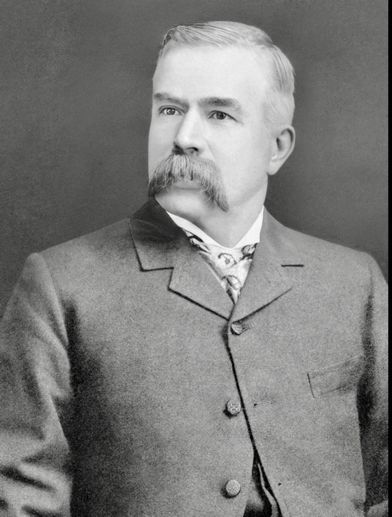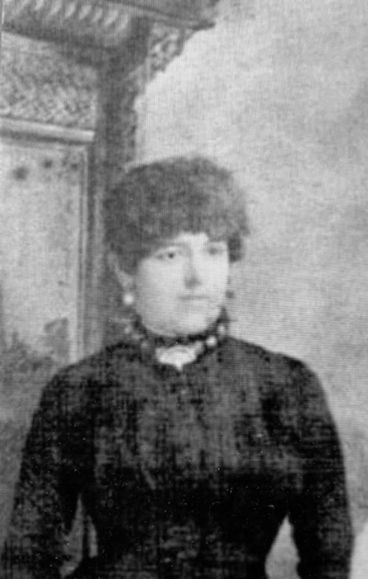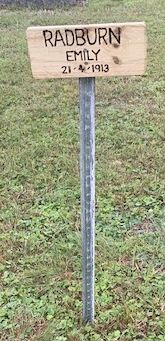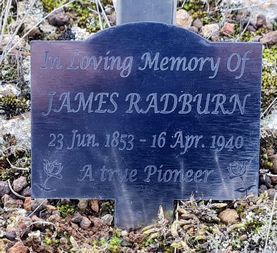Looking Back - Forgotten pioneers
By Leo Billington

In recent weeks we have flicked a switch – to warm our homes, to watch television, to use our computer, to make life supposedly easier.
Our parents and older forebears did it a little bit harder. Nonetheless, there were electric kitchen appliances, hot water was on tap, family size cars were sought after, lawn mowers kept suburban lawns neat, even soft beds, sometimes with an electric blanket.
If only pioneers from a vastly different era could see us now. A bunch of softies!
Consequently, one reflects on life for our local pioneers. It was tough. For those living and scratching out a living in the Strzelecki hills, life was generally a bitter battle for place and livelihood.
James Radburn was determined to make his place at Ryton a better place for everyone else struggling against those “Heartbreak Hills”. His livelihood as a selector was destined to be challenging.
Born in Ryton-on-Dunsmore, England, James Radburn joined the 17th Regiment of Foot at Coventry in 1869 and served in India until 1877, when he returned to England and joined the Coventry Metropolitan Police; he married Emily Husselby the following year.

Ryton-on-Dunsmore is in Warwickshire, not far from Coventry. In the late 1930’s, the Rootes Motor Group established their manufacturing plant here initially producing aircraft engines before concentrating on cars and trucks.
In 1886, he, along with his wife and two young children, left England for Australia, where he joined the Victoria Police Force in Melbourne. During his policing career he served in the Metropolitan and Gippsland regions, including Bairnsdale and Outtrim. He resigned from the force in 1906, shortly after selecting land for a farm in Wonyip.
In 1912 he became a Morwell Shire councillor representing the district of Boolarra, and later a Justice of the Peace. His wife died in 1913, and in 1919 he re-married Eliza Finlay, with whom he retired to live in Daylesford. He spent his final years living in Leongatha with his daughter, Amy Steele, and died there in 1940.
Emily is buried in an unmarked grave at the Hazelwood Cemetery. James’ grave in the Leongatha Cemetery is simply marked “a true pioneer’.
James was a Morwell Shire Councillor between 1912 and December 1918. Also elected as Councillors for this period, and representing the Boolarra Riding was Eugene Kneebone and David Thomas Latter. Records from this period suggest Councillors Radburn and Latter tended to vote as a block, sometimes to the chagrin of other Councillors such as Joseph Henry Buckley.

Councillor Kneebone would occasionally join with them in successful Council decisions. The three were extremely parochial representing the Boolarra Riding. This was a trio of tough, determined men who knew what they wanted.
In these early days Councillor Latter was keenly interested in the timber trade and especially in securing blackwood trees, which were at one time very plentiful in Boolarra and surrounding districts. In addition to selling the timber into Melbourne, he established a sawmill at Boolarra and was proactive developing valuable deposits of bauxite located close to Boolarra. As a Justice of the Peace his services were sought after in Boolarra, and he was frequently called upon to conduct magisterial enquiries in the district.
Late in June 1918, James Radburn was granted six months leave from Council duties to return home. It appears he wanted to do his bit for the Empire he so admired. At 60 years old, he volunteered for active service abroad although he was deemed too old. Health-wise, he was in remarkable order.
There seems to be other reasons to take leave. His son, Edward was killed at the front. Together with Emily’s passing five years earlier, loneliness and despair could not effectively be surpassed with James’ strident lobbying for improved conditions for rate-payers in those “Heartbreak Hills”. Moreover, James was so eager to get back there himself, he paid his own expenses to the Old Country in order to offer his services to the Empire.

Edward Radburn died of wounds in Egypt on 10 July, 1915, just several months after landings began on the Gallipoli Peninsula on April 25. At only 19, he was buried in the Alexandria Military and War Memorial Cemetery. His enlistment details showed he was a farm hand before joining the Australian Light Horse 9th regiment. He was remembered as a popular footballer and, an energetic farm hand for his father and family.
In hindsight, always a wonderful thing, leaving the skirmishes of Morwell Shire Council for six months was detrimental for James’ ambitions. On the other hand, he had grown tired of the shenanigans and possibly felt somewhat more mature than others on Council.
James Radburn lived in Radburns Road. His former farm is now encased in plantation timber and is barely recognisable, even for those with solid childhood memories. A house created from rough sawn timber, warmed by a wood stove, hot in summer, earthen floor initially, kerosene lamp, and tank water. Freezing in winter, rabbits and blackberries galore, ragwort competed with a few cows for grassy space.
Roads were tracks cleared by settlers for farm access by horse and/or bullock drawn vehicles. Mapped on original survey maps, wider roads were possible by cuttings alongside hills, eventually surfaced with gravel or metal. Picks, shovels, wheelbarrows and horse drawn ploughs and scoops constituted modern earthmoving equipment. Work teams camped on-site in tents.
There were many others who selected land throughout Ryton, Gunyah and Wonyip. There were plenty who eventually walked away.
James “took up the local cudgels”. With Councillor Latter, he successfully lobbied for better roads and culverts. Road washouts annoyed him intensely. He promoted and supported formation of a local Rabbit Destruction League. Railway leagues were formed at Welshpool, Woorarra, Traralgon, Toora and Ryton to agitate for a railway connection between the northern and southern Gippsland areas. James chaired the Ryton Railway League with undaunted enthusiasm and vigour.
Soon after James and Emily arrived in Ryton (or Gunyah as it was generally known), land was reserved for a hall and recreation reserve in 1906. Settlers built a hall of the best sawn hardwood, lined with softwood pine and kauri floors and supplied a piano. The school, S.S. 3586, opened in July 1908 as Wonyip Central (some reports state it was Wonyip North). Officially, it became known as the Excelsior Mechanics Institute. The locality and school name changed to Ryton in 1909, named after James Radburn’s hometown. Alongside others, Emily and James planted trees, gardens and established a tennis court.
It was from this hall James chaired many meetings, instrumental in improving local living conditions; keeping other Councillors vividly informed about life in the hills. Sadly, it was from this hall James and his wider community farewelled young volunteers departing for overseas military service – including Edward.
Following his six-month leave, James returned home to Ryton and to Council. Locally, it was felt his enthusiasm had waned. He tendered a written resignation in November 1918.
James wrote, “he had no desire to be associated any longer with a body of men capable of performing a dishonourable act.” The “act” was direct reference to purporting to be informative, mature and honest representatives for Morwell Shire ratepayers. James felt vested interests had taken over.
Naturally, there was a savage reaction – predominantly instigated by Councillor J H Buckley.
Incoming Shire President, Councillor W H Penaluna (himself from the Boolarra Riding), managed a few words – “He only did what you might expect from a man like him. He can be very well done without”.
Councillor John English attempted some fake professionalism – “Receive the resignation with thanks. He has ceased to be a councillor, and I think it's a very good thing”.
After other councillors had spoken, it was decided that James’ resignation be received.
James Radburn’s tenure was completed. He was satisfied.


